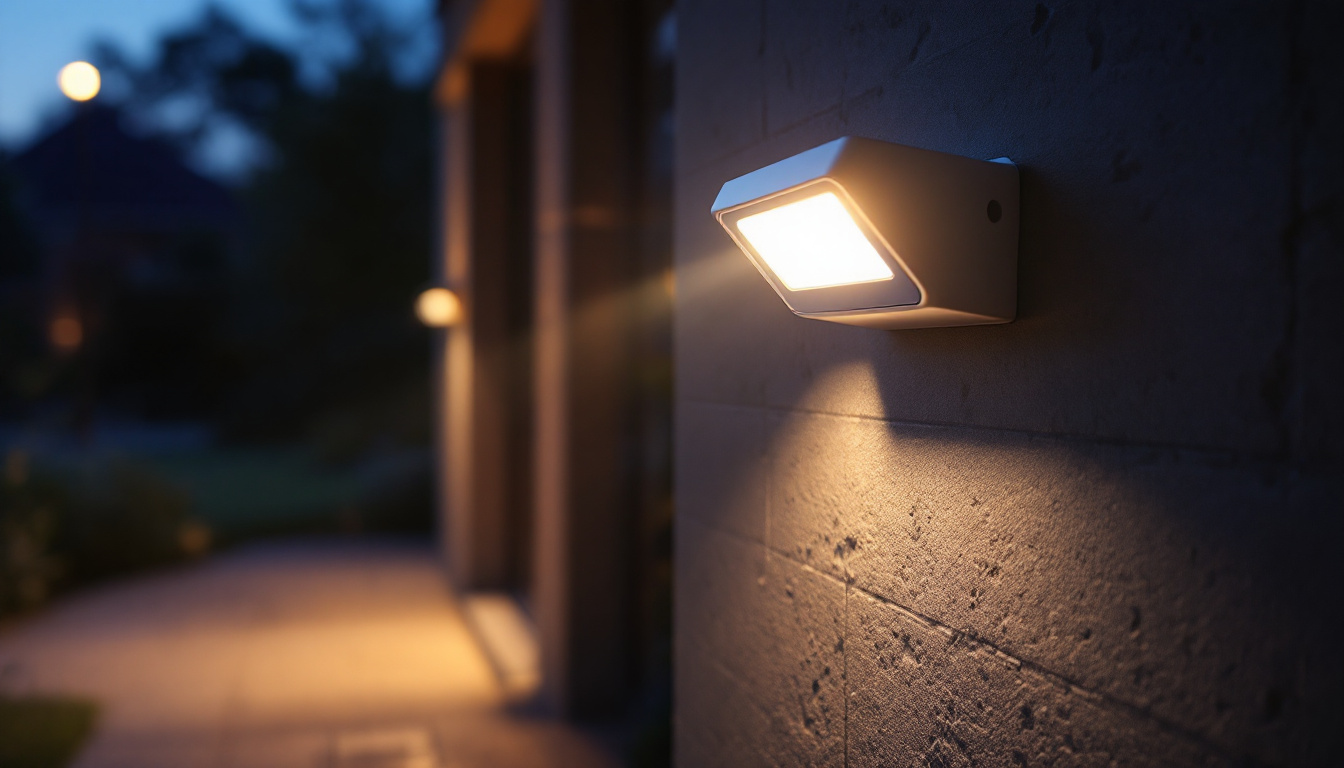
In the dynamic world of lighting design and installation, contractors face a myriad of challenges that demand both technical expertise and creative vision. Mastering the art of lighting not only enhances the aesthetic appeal of spaces but also plays a crucial role in energy efficiency and functionality. This article delves into the essential strategies and skills that lighting contractors can embrace to elevate their craft and ensure client satisfaction.
Before diving into advanced techniques, it is vital for lighting contractors to have a solid grasp of the fundamental principles of lighting. This foundational knowledge serves as the bedrock upon which all successful lighting projects are built.
Light is a form of energy that travels in waves, and understanding its properties is crucial for any lighting contractor. Key concepts include color temperature, lumens, and the difference between direct and indirect lighting. Color temperature, measured in Kelvin, affects the mood and functionality of a space. For instance, warmer tones (around 2700K) create a cozy atmosphere, while cooler tones (above 5000K) are often used in workspaces for better concentration.
Additionally, lumens measure the amount of light emitted by a source. A well-lit space requires an appropriate balance of lumens, ensuring that areas are neither too dim nor excessively bright. Finally, comprehending the differences between direct and indirect lighting can help contractors create layered lighting designs that enhance both aesthetics and functionality. Understanding how light interacts with surfaces is also essential; for example, matte finishes tend to diffuse light, while glossy surfaces reflect it, influencing how a space feels and looks.
Lighting fixtures come in various types, each serving distinct purposes. Familiarity with these types allows contractors to recommend the most suitable options for their clients. Common categories include ambient, task, and accent lighting.
Ambient lighting provides overall illumination, while task lighting focuses on specific areas where activities such as reading or cooking occur. Accent lighting, on the other hand, highlights particular features or artworks within a space. By understanding the roles of these different types of lighting, contractors can create harmonious designs that cater to their clients’ needs. Moreover, the choice of fixtures—whether pendant lights, wall sconces, or recessed lighting—can significantly influence the overall design aesthetic. For instance, industrial-style fixtures can add a modern touch to a loft, while vintage chandeliers may evoke a sense of elegance in a traditional home. Additionally, the integration of smart lighting technology is becoming increasingly popular, allowing for customizable lighting solutions that can adapt to various moods and activities, further enhancing the versatility of lighting design in contemporary spaces.
Creating a lighting plan is an essential step in any project. A well-thought-out plan not only enhances the visual appeal of a space but also ensures that lighting is functional and energy-efficient. Proper lighting can transform a mundane area into a vibrant environment, influencing mood and productivity while also highlighting architectural features and decor.
The first step in designing a lighting plan is to assess the client’s needs and preferences. Engaging in open dialogue helps contractors understand the intended use of the space, the desired ambiance, and any specific requirements the client may have. This information is invaluable for tailoring a lighting design that aligns with the client’s vision. For example, a cozy restaurant may require warm, dimmable lighting to create an intimate atmosphere, while a modern office might benefit from bright, cool lighting to enhance focus and energy.
Additionally, contractors should consider the architectural features of the space. High ceilings, large windows, and unique layouts all influence how light interacts with the environment. By taking these factors into account, contractors can create designs that enhance the inherent beauty of the space. Incorporating natural light sources, such as strategically placed skylights or large glass doors, can also complement artificial lighting and reduce energy consumption during daylight hours. This holistic approach ensures that the lighting plan not only meets functional needs but also elevates the overall aesthetic experience.
In today’s digital age, leveraging technology can significantly enhance the design process. Various lighting design software programs allow contractors to visualize their plans and make adjustments before installation. These tools can simulate how different fixtures will look in a space, helping clients better understand the proposed design. Additionally, many software solutions offer advanced features such as 3D modeling and virtual reality walkthroughs, providing clients with an immersive experience that can clarify their choices and preferences.
Moreover, software can assist in calculating energy efficiency and ensuring compliance with local regulations. By incorporating technology into their workflow, contractors can streamline the design process and improve client communication. This not only saves time but also minimizes the risk of costly revisions during installation. Furthermore, some programs can analyze lighting performance in terms of color temperature and brightness levels, allowing for fine-tuning that can enhance the comfort and functionality of the space. By embracing these technological advancements, contractors can deliver more precise and innovative lighting solutions that meet the evolving demands of modern design.
The installation phase is where the vision becomes reality. Mastering installation techniques is crucial for ensuring that lighting systems function as intended and meet safety standards.
Safety should always be a top priority during installation. Familiarity with electrical codes and regulations is essential for avoiding hazards and ensuring compliance. Contractors must also take the necessary precautions to protect themselves and their team during the installation process.
Proper training in handling tools and equipment, as well as understanding the risks associated with electrical work, can prevent accidents. Additionally, using high-quality materials and fixtures can minimize the risk of future issues, ensuring long-lasting results. It is also advisable to conduct a risk assessment before starting the installation, identifying potential hazards in the work environment. This proactive approach can help in devising strategies to mitigate risks and ensure that all team members are aware of safety protocols.
Successful lighting installation requires meticulous attention to detail. This includes ensuring that fixtures are level, properly aligned, and securely mounted. Furthermore, contractors should pay close attention to the placement of switches and dimmers, as these elements greatly influence the usability of the lighting system.
Testing the lighting after installation is also crucial. This step allows contractors to identify any issues and make necessary adjustments before the project is handed over to the client. A thorough walkthrough with the client can help address any concerns and ensure satisfaction with the final result. Moreover, documenting the installation process, including any challenges faced and solutions implemented, can serve as a valuable reference for future projects. This practice not only enhances the contractor’s skill set but also builds a repository of knowledge that can be shared with the team, fostering a culture of continuous improvement and learning.
The lighting industry is constantly evolving, with new technologies and design trends emerging regularly. To remain competitive, contractors must stay informed about the latest developments in the field.
As environmental concerns continue to grow, energy efficiency has become a significant focus in the lighting industry. Contractors should familiarize themselves with energy-efficient lighting options, such as LED fixtures, which consume less energy and have a longer lifespan compared to traditional incandescent bulbs.
Additionally, understanding the principles of sustainable design can help contractors create lighting solutions that minimize environmental impact. This may involve using materials with low environmental footprints or designing systems that utilize natural light effectively.
The rise of smart home technology has transformed the way lighting is controlled and integrated into residential and commercial spaces. Smart lighting systems allow users to control their lighting through mobile apps or voice commands, offering convenience and customization.
Contractors should explore the various smart lighting options available and consider how these technologies can enhance their projects. By incorporating smart lighting solutions, contractors can provide added value to their clients and differentiate themselves in a competitive market.
Successful lighting contractors understand that building strong relationships with clients is just as important as technical skills. Effective communication and trust are key components of a successful partnership.
From the initial consultation to project completion, clear communication is essential. Contractors should keep clients informed about project timelines, potential challenges, and any changes that may arise during the process. This transparency fosters trust and helps manage client expectations.
Additionally, providing regular updates and seeking feedback throughout the project can enhance client satisfaction. Engaging clients in the decision-making process ensures that their preferences are considered, resulting in a final product that aligns with their vision.
Offering post-installation support is an excellent way to strengthen client relationships. This may include providing maintenance tips, troubleshooting assistance, or even follow-up visits to ensure that the lighting system is functioning optimally.
By demonstrating a commitment to client satisfaction beyond the installation phase, contractors can foster loyalty and encourage referrals. Satisfied clients are more likely to recommend services to others, contributing to the contractor’s long-term success.
Mastering the art of lighting as a contractor involves a combination of technical knowledge, design skills, and strong client relationships. By understanding the fundamentals of lighting, designing effective plans, adhering to installation best practices, and staying current with industry trends, contractors can elevate their craft and achieve success in their projects.
Ultimately, the goal is to create spaces that are not only visually appealing but also functional and energy-efficient. By prioritizing client satisfaction and continuously improving skills, lighting contractors can establish themselves as leaders in the industry, paving the way for a bright future in lighting design and installation.
Ready to take your lighting projects to the next level? At LumenWholesale, we provide you with the essential tools to master the art of lighting. Our spec-grade lighting products combine quality and affordability, ensuring you can deliver exceptional results without breaking the bank. Say goodbye to local distributor markups and hello to a vast selection of reliable, high-performance lighting solutions. With free shipping on bulk orders, LumenWholesale is your go-to source for premium lighting at the best value. Elevate your craft and impress your clients by choosing Wholesale Lighting at the Best Value today.

Discover the key insights lighting contractors need to meet client expectations with light LED panels.

Discover the art of illuminating spaces with “Flowers Light: A Guide for Lighting Contractors.” This comprehensive guide offers innovative techniques, practical tips, and expert insights to help lighting professionals transform environments with the perfect glow..

Discover how exterior security lights with motion sensors can enhance safety and efficiency in your lighting projects.

Discover expert tips and insights on selecting and installing LED factory lights tailored for lighting contractors.